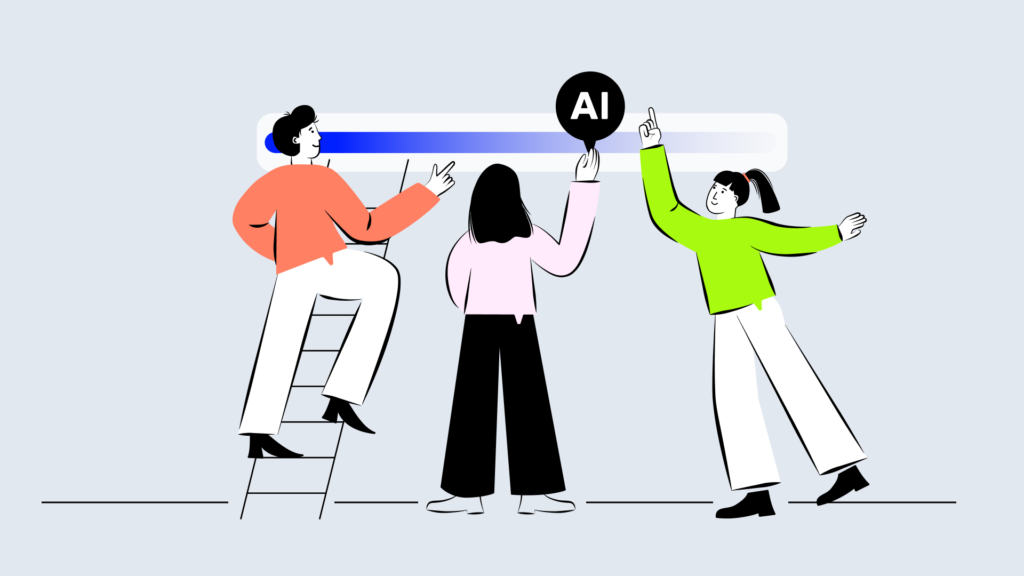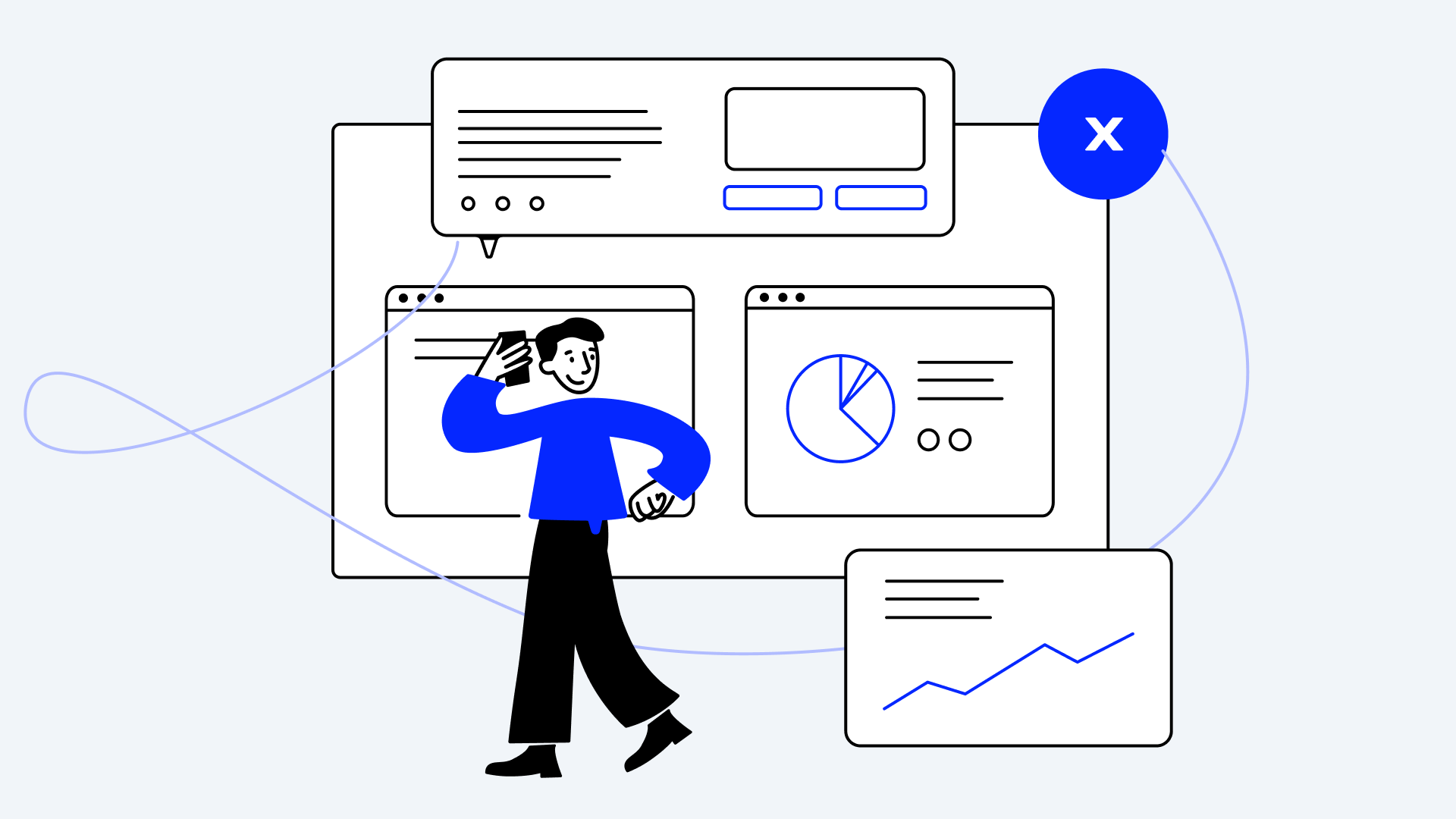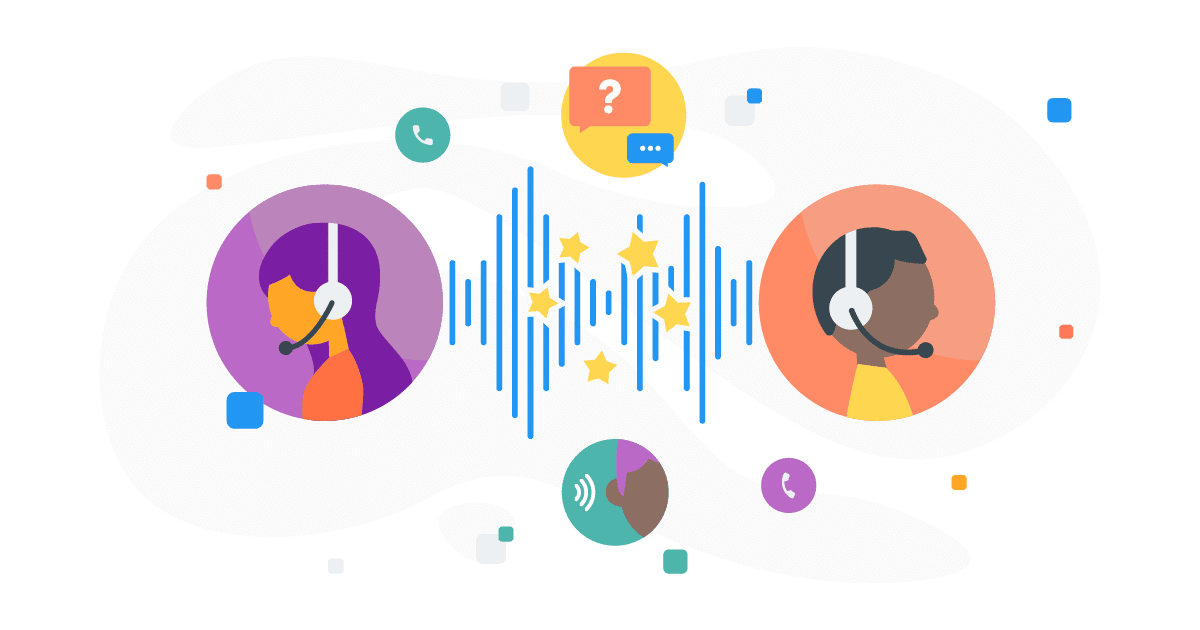
According to a MarketsandMarkets report, the speech analytics market is projected to grow from $1.5 billion in 2020 to $7.3 billion by 2029.
This growth underscores how much companies understand the importance of AI-powered analytics in improving customer service. And it makes perfect sense, because it reveals accurate and powerful insights quickly, among other benefits.
TL;DR
Follow these steps to use AI to analyze voice calls:
How to Use AI to Analyze Voice Calls?
Now, let’s discuss how to leverage AI technology to analyze phone calls and maximize their potential:
#1 Choose an AI-Powered Platform
Not all communication solutions integrate AI across all their functions by default. If your communication solution lacks AI integration, you might need to invest in separate tools.
Therefore, it’s wise to opt for a communication platform that incorporates AI seamlessly from the outset. This approach saves on the costs of acquiring and maintaining additional systems and streamlines workflows by consolidating them into a single platform.
When selecting an AI-driven platform, consider the specific requirements of your business:
- Integrations: Ensure the platform integrates smoothly with your existing systems and tools.
- Data protection and privacy compliance: Verify that the AI platform fully complies with relevant data protection laws and consumer privacy regulations, such as GDPR.
- Scalability: Choose a scalable software that lets you add or remove seats as needed to accommodate your business growth.
Automate call insights for better coaching and happier clients.

#2 Decide What You Want to Analyze
AI can analyze a wealth of data, from customer sentiment analysis to identifying key call topics. That’s why it’s important to clarify your main goals and prioritize the functionalities that meet them the best.
For example, if you want to enhance customer satisfaction, you might analyze call sentiments to identify moments of frustration and happiness. Understanding these emotional cues could help train your agents to handle difficult situations better and replicate positive results.
On the other hand, if you aim to increase operational efficiency, you could focus on automatic transcription and keyword analysis to swiftly identify recurring issues and develop proactive solutions.
#3 Perform Call Quality Control
To perform call quality control, follow these steps:
- Analyze call transcriptions: AI can generate accurate call transcriptions, allowing you to review interactions and identify areas for improvement in agent-client conversations. To analyze an AI call transcript, first identify the main topics and key points discussed. Then, evaluate how well the AI responded and check for accuracy and user satisfaction.
- Gather information: AI Call Analytics review call transcriptions at scale, uncovering trends, issues, and customer preferences. This data enables informed decision-making to improve call center processes based on metrics and KPIs.
- Evaluate agent performance: AI algorithms assess calls based on customer service goals and standards. This helps managers identify areas for improvement and decide if your call center agents need additional training.
#4 Improve Self-Service and Knowledge Management
62% of millennials and 75% of Gen-Z prefer self-service, even when they could contact customer support.
This doesn’t mean that calls are “dead”; customers prefer to be self-sufficient so they don’t have to wait to be assisted by a customer service agent every time they have a small issue or question.
For example, analyzing automatic call transcriptions and summaries can help identify recurring themes or queries. If these topics are not covered or are outdated in the Knowledge Base, they can be added or updated accordingly.
5 Key Benefits of Using AI Call Analysis
Now that you understand how to use AI to analyze voice calls, you may be curious about the benefits.
#1 Cut Costs
Here’s why using AI to analyze phone calls saves you money:
- Automate analysis: AI automates the analysis of large volumes of calls quickly, eliminating the need for dedicated human resources. This saves costs in terms of manpower and reduces potential errors.
- Optimize resources: AI identifies problems and patterns automatically so you can prioritize important areas or issues.
- Reduce training costs: AI analyzes conversations to identify the most effective sales or customer service approaches. This can lower costs associated with staff training, as successful strategies can be identified and shared automatically.
#2 Save Time
Companies using call analytics tools can reduce average handling time by around 40%. Here are some reasons why:
- Do extensive analysis: AI analyzes 100% of phone calls, giving you a complete view without manually reviewing each call.
- Automatically transcribe calls: AI transcribes phone calls to text, removing the need for manual transcription.
- Get information quickly: AI analyzes transcriptions to find key information, such as sentiment, topics, and customer satisfaction, so you don’t need to listen to each call.
- Ensure consistent evaluation: AI uses the same analytical framework for each call, ensuring consistent and impartial evaluations, unlike manual reviews that can have human errors and inconsistencies.
- Filter and prioritize easily: AI-powered tools filter and prioritize calls by tags or keywords, allowing you to focus on the most important conversations and quickly get to the key parts.
Discover how you can ditch the manual call analysis and guesswork.
#3 Improve Customer Satisfaction
AI can analyze tone of voice, words, and other indicators to understand how customers feel during calls. This helps agents adjust their approach based on customer emotions, showing empathy and better responding.
Moreover, by using advanced analytics, AI can automatically assess how agents perform during calls, identifying areas for improvement such as response times, handling of complaints, or adherence to procedures. This allows supervisors to give specific feedback and personalized training, improving the overall quality of service.
#4 Boost Agents Productivity
We’ve already seen that AI provides data on agents’ performance, allowing us to identify areas for improvement and enhance productivity.
Moreover, AI-generated call summaries significantly reduce after-call work, facilitating quick post-call notes, follow-ups, and manager reviews. This saves time for everyone by making key points readily accessible.
#5 Make Data-driven Decisions
Here are some reasons why AI call analysis helps you make more informed decisions compared to manual analysis:
- Get more accurate data: AI call analysis tools can accurately identify patterns, trends, and insights when processing large volumes of call data. This minimizes the risk of errors compared to manual analysis.
- Obtain real-time information: AI can analyze call data in real-time, providing immediate insights that enable timely data-driven decisions. This is crucial in dynamic environments such as contact centers.
- Integrate with other data sources: AI call analysis can be combined with mobile app analytics to provide a more comprehensive view of customer behavior. By analyzing both call data and app usage patterns, businesses can identify correlations between app features and customer support needs, leading to more targeted improvements in both app functionality and customer service.
For example, imagine that you are running an e-commerce business. By analyzing calls with AI, you might detect that many customers complain about product delivery delays.
If you discover these delays are consistently linked to a particular supplier, you can choose to switch suppliers or improve logistics to speed up deliveries. This data-driven choice can boost customer satisfaction and reduce returns.
Unlock 100% Call Insights With Cloudtalk
By using AI call analysis as outlined in this article, you can maximize benefits such as cost and time savings, increased agent productivity, and consequently, enhanced customer satisfaction.
The first crucial step is selecting an AI solution tailored to your business needs. CloudTalk’s AI-powered conversation intelligence reveals valuable insights from every call, in minutes rather.
Explore how CloudTalk can revolutionize your customer interactions today.

See call insights automation in action!

















